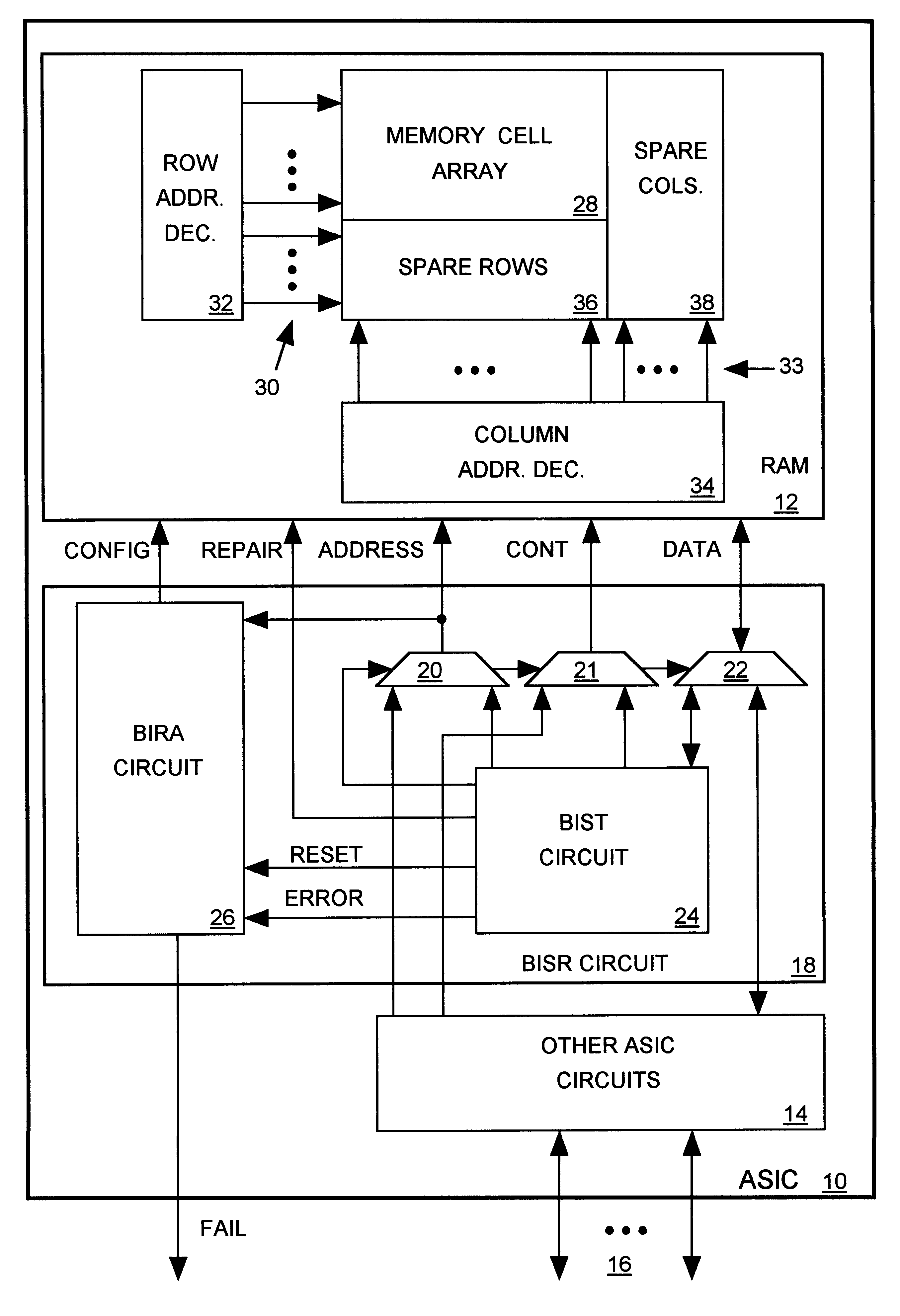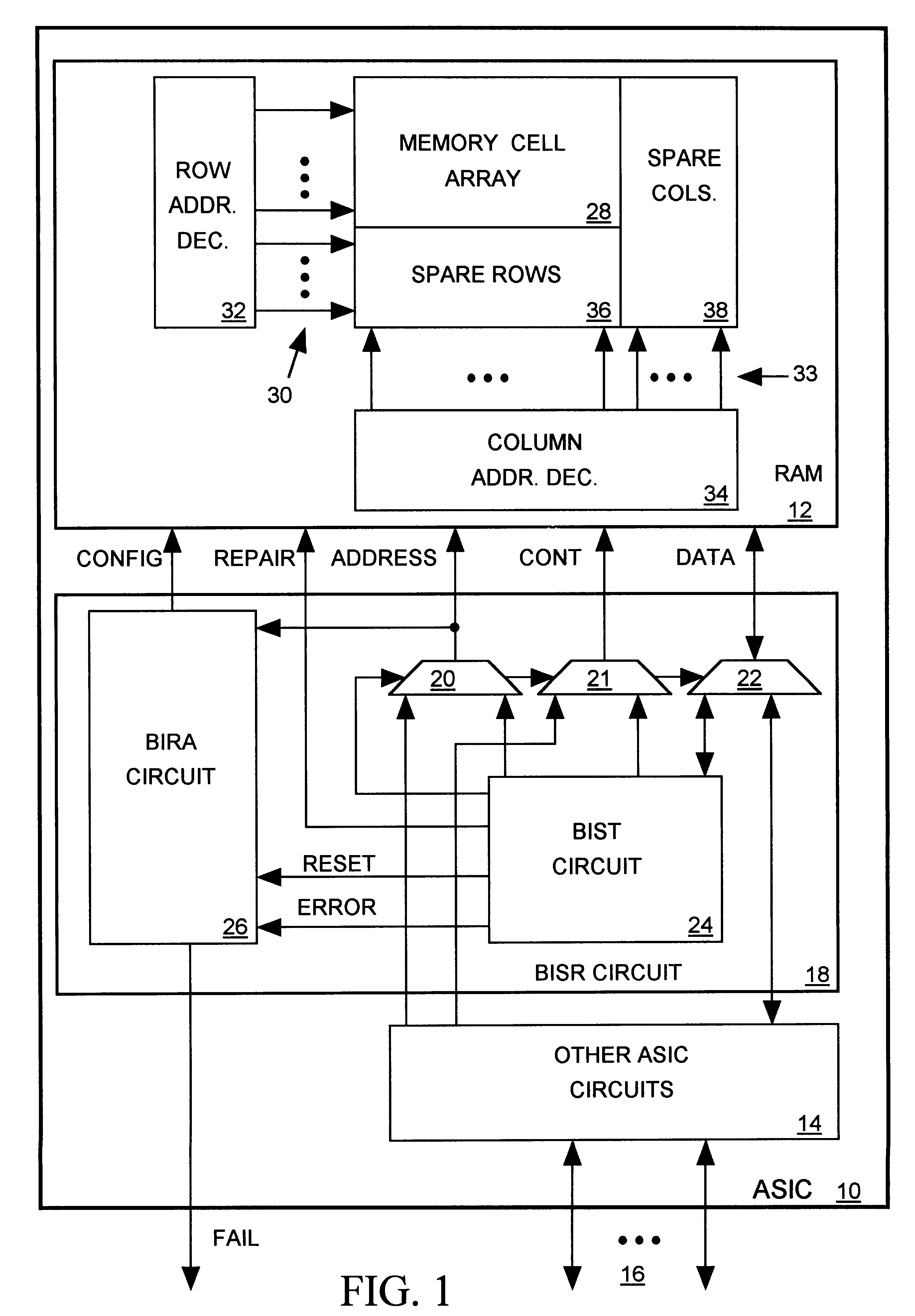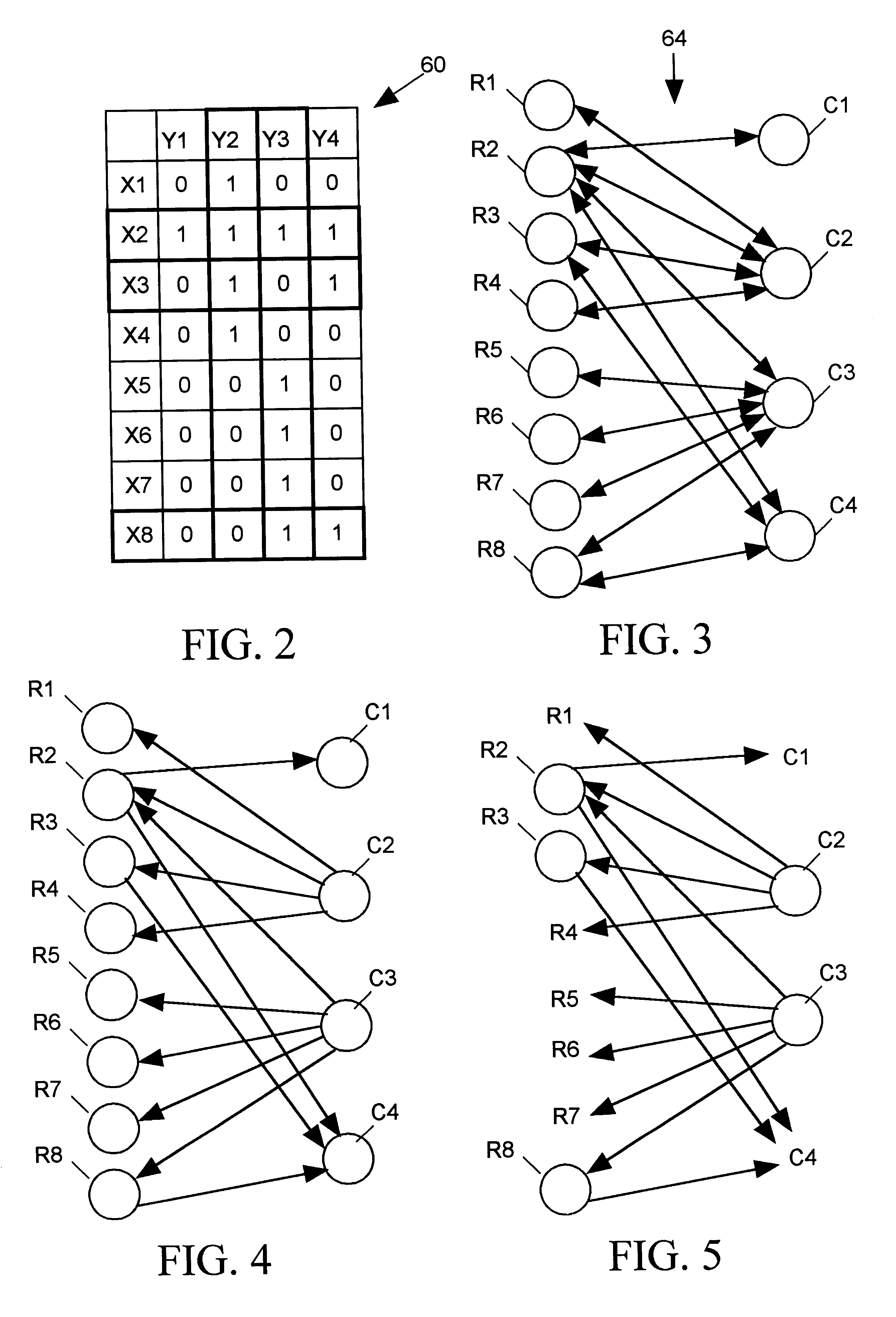Built-in spare row and column replacement analysis system for embedded memories
a technology of embedded memory and analysis system, which is applied in the direction of electronic circuit testing, measurement devices, instruments, etc., can solve the problems of inability to use asic, inefficient use of spare column replacement system, and radiation damage to ram cells, etc., to achieve the effect of optimizing spare row and column allocation
- Summary
- Abstract
- Description
- Claims
- Application Information
AI Technical Summary
Benefits of technology
Problems solved by technology
Method used
Image
Examples
Embodiment Construction
BISR System Architecture
FIG. 1 illustrates in block diagram form an application specific integrated circuit (ASIC) 10 including an embedded random access memory (RAM) 12, and other ASIC circuits 14. During normal ASIC operation, ASIC circuits 14 also read and write access RAM 12 and communicate with external devices via the ASIC's input / output (I / O) terminals 16. Since the data, address and control terminals 32 of RAM 12 are not directly accessible to external test equipment via the ASIC's I / O terminals 16, a built-in self-repair (BISR) system 18 in accordance with the invention is incorporated into ASIC 10 to test and repair RAM 12.
ASIC circuits 14 normally read and write access the address, control and data terminals of RAM 12 via a set of multiplexers 20-22 included in BISR subsystem 18. However when BISR system 18 is to test RAM 12, (for example on system power up) a built-in self-test (BIST) subsystem 24 of BISR subsystem 18 switches multiplexers 20-22 to connect BIST subsystem...
PUM
 Login to View More
Login to View More Abstract
Description
Claims
Application Information
 Login to View More
Login to View More - R&D
- Intellectual Property
- Life Sciences
- Materials
- Tech Scout
- Unparalleled Data Quality
- Higher Quality Content
- 60% Fewer Hallucinations
Browse by: Latest US Patents, China's latest patents, Technical Efficacy Thesaurus, Application Domain, Technology Topic, Popular Technical Reports.
© 2025 PatSnap. All rights reserved.Legal|Privacy policy|Modern Slavery Act Transparency Statement|Sitemap|About US| Contact US: help@patsnap.com



